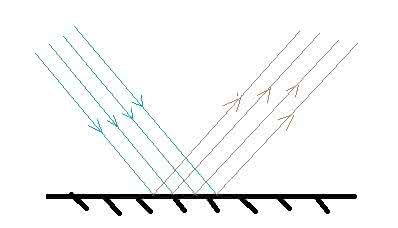
| Online Judge | Online Exercise | Online Teaching | Online Contests | Exercise Author |
|
F.A.Q Hand In Hand Online Acmers |
Best Coder beta VIP | STD Contests DIY | Web-DIY beta |
Dying Light
Time Limit: 2000/1000 MS (Java/Others) Memory Limit: 131072/131072 K (Java/Others)Total Submission(s): 875 Accepted Submission(s): 203
Problem Description

LsF is visiting a local amusement park with his friends, and a mirror room successfully attracts his attention. Inside the mirror room, there are n plane mirrors standing vertically on the ground. They are placed end-to-end and face-to-face so that if you overlook the room, you can find a convex hull and the all the reflector surfaces are inside the pattern. The height of the mirror is not important in this problem.
Due to imperfect manufacturing techniques, mirrors can't reflect light without lose of energy. Each mirror has a reflection efficiency k, which means if the incident light's intensity is I, the reflected light's intensity will be reduced to kI. The only exception could happen when the light precisely goes to the two mirrors' junction. In that case, the light will be completely absorbed instantly. Note the laws of reflection of light applies in all other situations, that the angle of incidence equals the angle of reflection.
Now LsF stands inside the mirror hall, and shoots a laser beam paralleled to the ground using his laser pointer. Unfortunately, his laser pointer can only shot laser beams with intensity of 1. What's worse, a laser beam is considered disappeared if its intensity is below $10^{-4}$. There's not much magnitude distance between the two numbers.
LsF wants to know how many touches can his laser beam make with mirrors before it disappears.
Input
The first line contains an integer n(3¡Ün¡Ü1000), indicating the number of mirrors;
Then n lines follow. The ith line contains three real numbers $x_i,y_i,k_i(-10^9¡Üx_i,y_i¡Ü10^9;0¡Ük_i¡Ü0.9)$, which means the ith mirror's one end is at position $(x_i,y_i)$ and another end is at ($x_{i+1}$mod n,$y_{i+1}$mod n), and its reflectivity is $k_i$.
Next there are two real numbers Vx,Vy(-109¡ÜVx,Vy¡Ü109), indicating the initial direction vector of the laser beam.
LsF is standing at the origin (0, 0).
Then n lines follow. The ith line contains three real numbers $x_i,y_i,k_i(-10^9¡Üx_i,y_i¡Ü10^9;0¡Ük_i¡Ü0.9)$, which means the ith mirror's one end is at position $(x_i,y_i)$ and another end is at ($x_{i+1}$mod n,$y_{i+1}$mod n), and its reflectivity is $k_i$.
Next there are two real numbers Vx,Vy(-109¡ÜVx,Vy¡Ü109), indicating the initial direction vector of the laser beam.
LsF is standing at the origin (0, 0).
Output
Output an integer in one line, the number of touches the laser beam could make before it disappears.
Sample Input
4 1 2 0.5 -1 0 0.5 1 -2 0.5 3 0 0.5 0 1 4 1 1 0.5 -1 1 0.5 -1 -1 0.5 1 -1 0.5 1 1
Sample Output
14 1
Source
| Home | Top |
Hangzhou Dianzi University Online Judge 3.0 Copyright © 2005-2024 HDU ACM Team. All Rights Reserved. Designer & Developer : Wang Rongtao LinLe GaoJie GanLu Total 0.000000(s) query 1, Server time : 2024-11-22 11:48:18, Gzip enabled |
Administration |